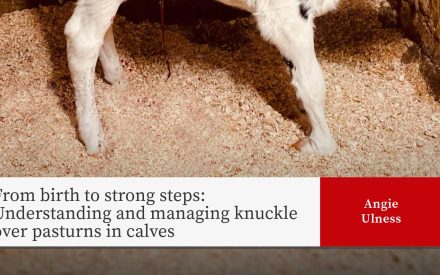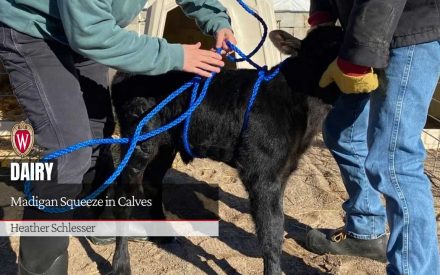Prototheca bovis has been cultured in herds and is emerging as a threat to producers statewide. Prototheca has been linked to mastitis since 1952, however, within the last five years, the prevalence has significantly increased. Similar to Staph aureus and mycoplasma, Prototheca is hard to detect, has no known cure, and is contagious by intermittently shedding from cow to cow.
Prototheca bovis creates challenges for herd health and production
Prototheca is colorless, intracellular yeast-like microalgae that cause incurable acute or chronic mastitis in dairy cattle. There is no easy way to prevent Prototheca infections and no treatment for the mastitis. Frustration and economic losses are related to veterinary care expenses for treatment and services, reduced milk production, and premature removal of affected animals.
While not all farms have this algae in their environments, on farms where it is present, Prototheca is everywhere and widely spread. Prototheca thrives in environments with high humidity and plentiful damp organic matter. Reservoirs include but are not limited to soil, holding areas, waterers, forage, bedding materials, cattle feces to milkhouse floors, teat dip containers, milking parlor wash water, and other cow-barn surroundings.

Early symptoms are hard to detect
What makes this type of mastitis so dangerous is that often times when a herd is infected, cows show mild signs of inflammation. The infections typically develop over months, indicating Prototheca’s ability to survive or evade host immunity. A characteristic of Prototheca infection is the progressive drop in milk production in the affected quarter as this intrusive organism damages udder tissue. Often times producers do not recognize infection has occurred until the quarter’s nearly dry. To add to the insult, positive cows continue to intermittently shed large numbers of the organism, transferring cow to cow at milking.
Prototheca may be diagnosed by bulk tank or individual cow cultures. However, this mastitis takes longer to grow and needs a selective culture media to develop. Furthermore, Prototheca has the ability to form biofilms in isolation. Biofilms appear to increase the resistance against various sanitizers, potentially enhancing transmission by preventing removal from contaminated surfaces.
How to deal with Prototheca on your farm
Eradication of Prototheca is rare, in terms of poor response to therapy and it is difficult to clean the environment of it due to the biofilms formed. If you have had a steadily increasing bulk tank somatic cell count (SCC) over time and culture for forms of mastitis, consider culturing for Prototheca. Identify potentially infected cows for culture that do not respond to antibiotic treatment and monitor SCC data from individual cows. A producer-veterinarian relationship should be established to help determination of mastitis-causing agents. Environmental sources should be investigated, gold standard milking procedures and hygiene be practiced, and when infusing the mammary gland wear gloves at dry off and at treatment, and the teats must be clean and dry, using a separate alcohol wipe for each teat before infusing the teat. Do not reuse teat cannulas or tubes and insert the teat cannula only partially into the teat canal. Prototheca bovis mastitis has shown resistance to a wide variety of pharmacological products including antibiotics. Because this mastitis is incurable, infected cows should clearly be identified and milked last in the milking order until they can be culled. There is a lot to still be learned of this new and emerging threat to dairies. Be aware of this form of contagious mastitis and the frustrations in dealing with it once it is identified.

 Udder Hygiene Tips That Won’t Stress Your Cow
Udder Hygiene Tips That Won’t Stress Your Cow From birth to strong steps: Understanding and managing knuckle over pasturns in calves
From birth to strong steps: Understanding and managing knuckle over pasturns in calves ▶️ Watch: Confort y diseño de instalaciones en granjas lecheras
▶️ Watch: Confort y diseño de instalaciones en granjas lecheras Madigan Squeeze in Calves
Madigan Squeeze in Calves


